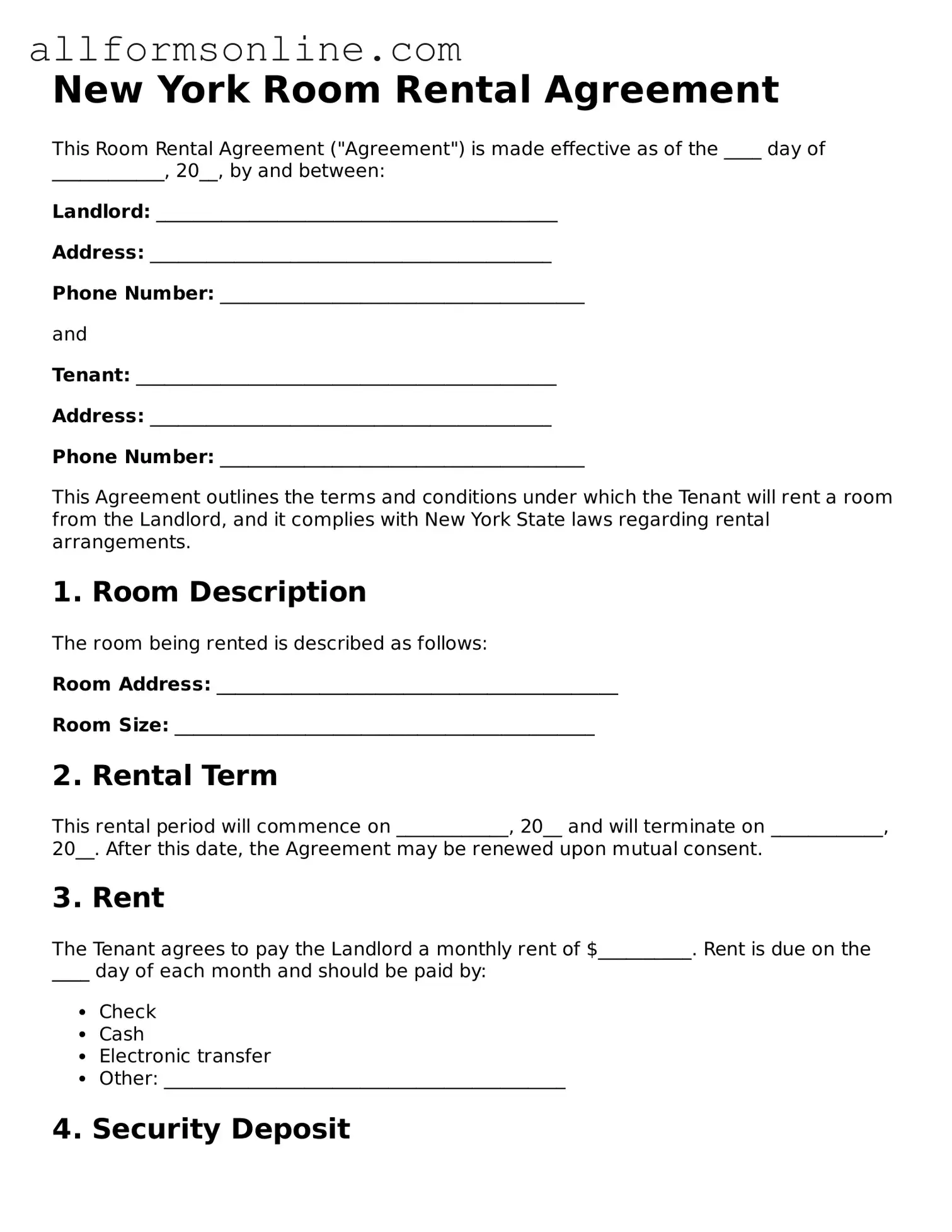What is a New York Room Rental Agreement?
A New York Room Rental Agreement is a legal document that outlines the terms and conditions under which a room is rented. This agreement typically includes details such as the rental amount, duration of the lease, security deposit requirements, and the responsibilities of both the landlord and the tenant. It serves to protect both parties by clearly defining their rights and obligations, ensuring a smoother rental experience.
What should be included in the Room Rental Agreement?
Essential elements of a Room Rental Agreement include the names of the landlord and tenant, the address of the rental property, the rental amount and due date, the length of the lease, and any rules regarding the use of shared spaces. Additionally, it’s important to specify the security deposit amount and conditions for its return. Including clauses about maintenance responsibilities and termination procedures can also help prevent disputes later on.
How can I modify an existing Room Rental Agreement?
Modifying a Room Rental Agreement requires the consent of both the landlord and tenant. Any changes should be documented in writing and signed by both parties to ensure clarity and enforceability. It’s advisable to create an amendment that outlines the specific changes being made, such as adjustments to rent or lease duration. This helps maintain a clear record of the agreement's terms over time.
What happens if the terms of the Room Rental Agreement are violated?
If either party violates the terms of the Room Rental Agreement, the other party has the right to seek remedies as outlined in the agreement. This may include providing a notice to remedy the violation, which gives the offending party a chance to correct the issue. If the problem persists, legal action may be necessary, which could involve eviction proceedings or claims for damages. It’s essential to document any violations and communications regarding them to support your case.
